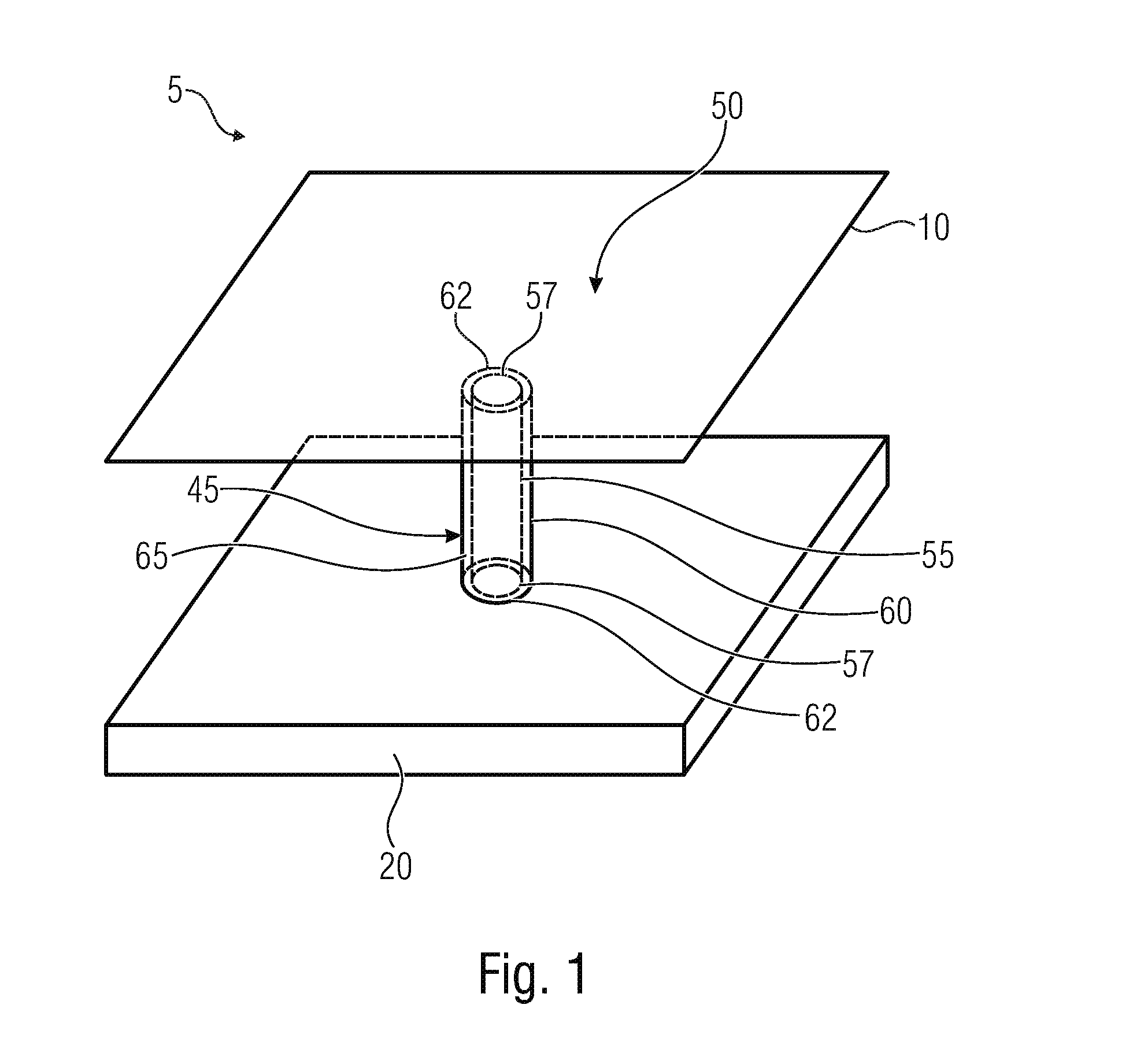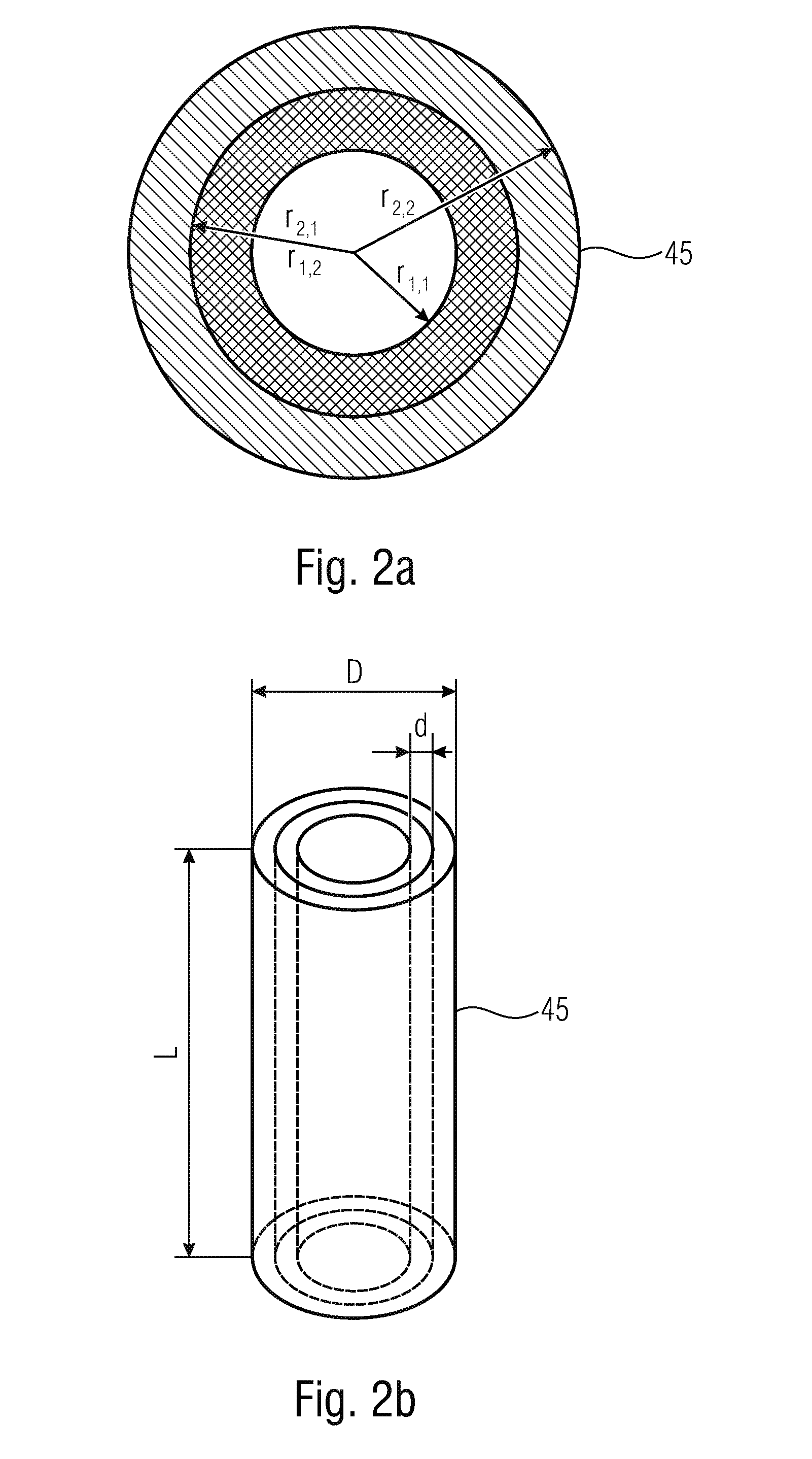Radiation detector, array of radiation detectors and method for manufacturing a radiation detector
a radiation detector and array technology, applied in the direction of measuring devices, scientific instruments, instruments, etc., can solve the problems of insufficient thermal conductance to achieve a good performance, the boundary of lithography could be quickly reached, and the membrane is poorly thermally insulated from the substrate, so as to achieve the effect of reducing the area consumption of such a ridge and increasing the yield of membrane area
- Summary
- Abstract
- Description
- Claims
- Application Information
AI Technical Summary
Benefits of technology
Problems solved by technology
Method used
Image
Examples
Embodiment Construction
[0040]FIG. 1 shows a schematic illustration of a side view of a radiation detector 5. The radiation detector 5 includes a membrane 10 that is suspended above a substrate 60 by a spacer 45, wherein the spacer 45 thermally insulates a radiation sensor, which is formed in the membrane 10, from the substrate 20. The spacer includes a first layer 55, which is electrically conducting and contacts a first pole 57 of the radiation sensor 50 and of the substrate 20, and further, a second layer 60, which is electrically conducting and electrically insulated from the first electrically conductive layer 55 and contacts a second pole 62 of the radiation sensor 50 and of the substrate 20, which differs in polarity from the first pole 57.
[0041]According to an embodiment, the spacer 45 includes a third layer 65 between the first and the second layer 55 and 60, wherein the third layer 65 electrically insulates the first and second layer 55 and 60 from each another.
[0042]The spacer 45 may realize the...
PUM
 Login to View More
Login to View More Abstract
Description
Claims
Application Information
 Login to View More
Login to View More - R&D
- Intellectual Property
- Life Sciences
- Materials
- Tech Scout
- Unparalleled Data Quality
- Higher Quality Content
- 60% Fewer Hallucinations
Browse by: Latest US Patents, China's latest patents, Technical Efficacy Thesaurus, Application Domain, Technology Topic, Popular Technical Reports.
© 2025 PatSnap. All rights reserved.Legal|Privacy policy|Modern Slavery Act Transparency Statement|Sitemap|About US| Contact US: help@patsnap.com



